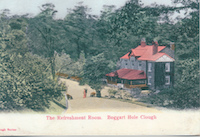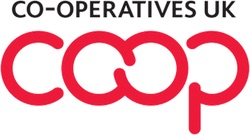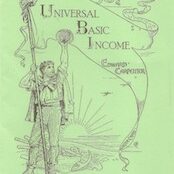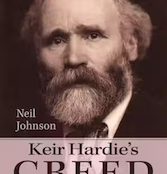An area of open ground in north Manchester once hosted meetings with Keir Hardie and Emmeline Pankhurst, and became the focus of a battle for political freedom. ROD PETERS tells the tale.
Boggart Hole Clough in the 1890s was an extensive open area covering some 147 acres of rough grass, sandy slopes, fields and natural woods in north Manchester. The geography of the Clough is such that from the main road, a cup-shaped hollow, open to the brook side, makes a natural amphitheatre in the slope, holding perhaps 30,000 people.
Political meetings had been held at the Clough as early 1892 by the North Manchester Fabian Society. The Fabians, and later the Independent Labour Party (ILP), found that they could hold their meetings undisturbed due to the fact that the Clough formed part of the Carlill Worsley Estate. In 1895, circumstances changed when the Corporation of Manchester purchased the property for the public for £8,000. The running of the property came under the jurisdiction of the Parks and Cemeteries Committee.
Despite the change in ownership, the ILP continued throughout the summer of 1895 to hold their political meetings. The meetings, although attended by a relatively small number (150 people on average), were nevertheless important to the ILP. They had suffered at the polls in the election of 1895 and financially the Manchester branch was struggling to make ends meet.
In 1896, the Parks and Cemeteries Committee, under the chairmanship of Councillor George Needham, decided to put an end to the meetings of a ‘certain party’. The growth of socialism was on the rise nationally and political opponents took any opportunity to block this advance. One method adopted was to prohibit the socialists holding meetings by placing orders against them. Legally, at the time, there was no bye-law that prohibited meetings in the park but there was the option of a bye-law passed in 1868 to prohibit disorderly behaviour.
Action commenced on 10 May 1896 when the park constable at Boggart Hole Clough warned the chairman of the ILP, that should a meeting scheduled for the following week take place, promoters of the meeting would be summonsed.
The meeting on the 17 May went ahead, chaired by John Harker, vice president of the Manchester & Salford ILP. In light of the threat of the summonses, the number of spectators at the meeting rose to 1,500. In the event, John Harker was summonsed along with five others and fined 10 shillings.
By the time the matter arrived in court on 3 June, 20 further summonses had been issued for meetings on the 24 and 31 May. Mr Cobbett prosecuted on behalf of Manchester City Council, and Dr Richard Pankhurst defended. Despite the plea that meetings were orderly, the magistrates imposed fines of £5 to £10 plus 40 shillings costs.
The action by the council served only to increase the numbers attending the meetings. Two thousand people attended the Clough on the 7 June to hear Leonard Hall and Emmeline Pankhurst. Again, summonses were issued: ‘Mrs Pankhurst was present and devoted her open umbrella to the purposes of the collection.’
Suppressed opinions
Richard and Emmeline Pankhurst were both active members of the Independent Labour Party. Richard Pankhurst made several unsuccessful attempts to be elected to the House of Commons but his political career came to an end when he died of a perforated ulcer in 1898.
The summonses were heard at the City Police Court on Friday 12 June. The hearing took a similar pattern to previous ones. Mr Cobbett prosecuting said: ‘They had persistently gone to the park and caused annoyance – the right of the public to use the park was trespassed on by these meetings.’
Leonard Hall replied for the defence: ‘They (ILP) knew it was the case of an attempt on the part of those who did not agree with their opinions to suppress the expression of those opinions.’ The crowd in the court broke into loud applause and was only silenced by the threat of expulsion from the court. Leonard Hall was fined £5, he refused to pay and was imprisoned for one month in Strangeways.
The next meeting on 14 June saw 10,000 people attend the Clough. Fred Brocklehurst addressed the meeting and was duly summonsed. He appeared in court the following Friday and, like Leonard Hall, refused to pay his fine and was imprisoned for one month.
On 20 June, Emmeline Pankhurst addressed a meeting attended by 20,000 people. Her daughters, Christabel and Sylvia were present at the meeting and were seen collecting donations to the ILP – £11 was raised. Unlike previous meetings, the Park Committee decided not to issue summons on Mrs Pankhurst. The dilemma was whether they were willing to prosecute, and perhaps imprison, the wife of a leading barrister. A special meeting of the committee was held and the meeting agreed to withhold further prosecution until after the next full council meeting.
In the meantime, the MP for Prestwich, RHF Cawley, on 22 June, raised the matter of the imprisonment of Leonard Hall with the Home Secretary in the House of Commons. The Home Secretary denied Hall was imprisoned for political reasons and, if Hall undertook to ‘desist from holding similar meetings in future’, then the Magistrate would concur in the prisoners’ immediate release.
Back in Manchester, the meetings continued and on Monday 29 June, an open air meeting was held at New Cross to demonstrate against the corporation’s actions.
The council meeting on 1 July considered a motion to hold an enquiry into the whole affair but was defeated. As no decision was made, planned court hearings continued.
Heated issue
Politically, the matter was beginning to hot up. On 3 July, Keir Hardie entered the scene and held a meeting with an estimated 1,200 people in Stevenson Square. He called for the release of Hall and Brocklehurst and hoped next Sunday (5 July) to have the opportunity of ‘saying all he wanted to say on this matter in Boggart Hole Clough itself’.
By all accounts, the meeting of 5 July was a major event. The Pankhurst family and Keir Hardie drove up in an open barouche to the Clough. Travelling along Piccadilly and Rochdale Road they were cheered by crowds on the way to the meeting. As usual, summonses were served but this time included Keir Hardie and Emmeline Pankhurst.
On 11 July, Leonard Hall was released from Strangeways followed a week later by Fred Brocklehurst. They had both lost weight and were in poor shape.
On 14 July the cases against Keir Hardie, Emmeline Pankhurst and other women collectors were heard. The whole hearing turned into a farce when Hardie staggered the bench by calling for an adjournment as he had 473 witnesses to call upon. The Prosecutor refused and told Hardie he could call what witnesses he liked. By the time the 20th witness had been called, the bench had had enough and adjourned the hearing to 6 August.
The final twist in the story came on 28 July when the Parks and Cemeteries Committee held a special meeting to consider a new bye-law to ban meetings in parks across Manchester. The bye-law was not passed due to 26 councillors walking out in protest against George Needham’s stance. The bye-law was eventually passed on 5 August but not ratified until January 1897 as the Home Secretary watered down the provisions. The new bye-law allowed meetings at the discretion of the Parks and Cemeteries Committee but in having this power, the committee had to accept any reasonable demand.
In view of the delay in ratification, the summonses were dropped against Hardie and Pankhurst. The view at the time was that prosecutions were dropped because George Needham feared the possibility of being called as a witness by Hardie.
In May 1897, the Manchester ILP opened its summer propaganda campaign at Boggart Hole Clough with an audience of 2,000 people. Meetings continued at the Clough and were generally free of interference. In September 1913, Hardie returned to the Clough to hold a meeting to celebrate the ILP.
Meetings to this day are still permitted in the city parks of Manchester and allegedly there is an iron stump in the Clough that marks the place where such meetings can take place.
—-
This article was originally published by Friends of Boggart Hole Clough.
It was extracted by Rod Peters from his 1984 MA thesis, Boggart Hole Clough and the ILP, May to August 1896.



